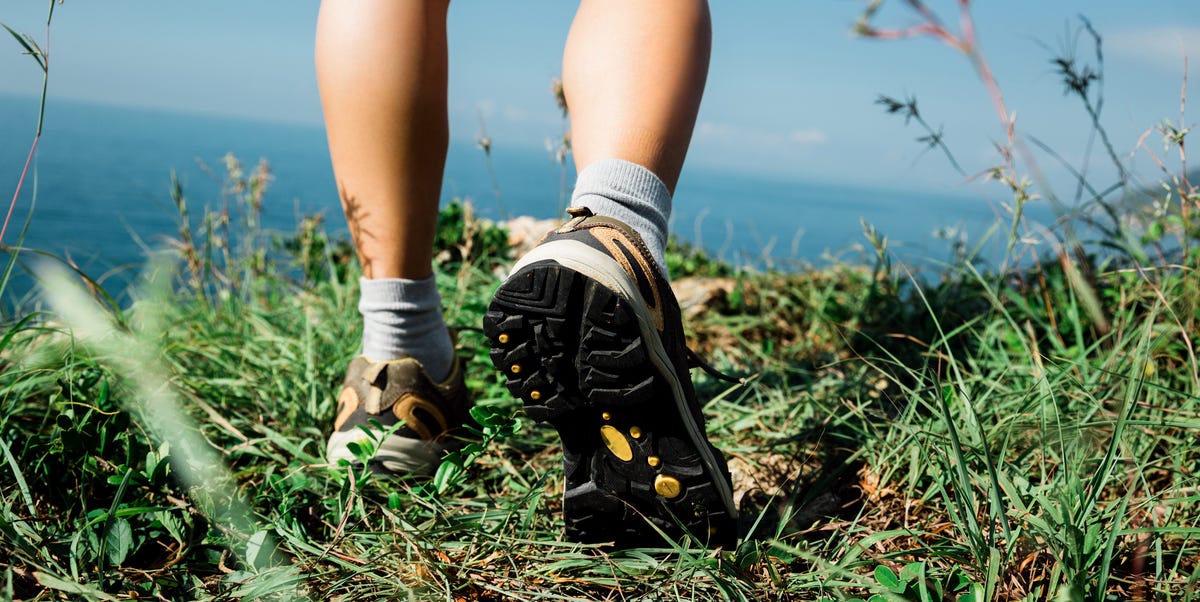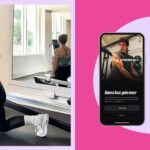You realize the importance of a healthy heart and strong muscles, but have you ever thought about training your bones?
Nearly 20 percent of women under 30 already showing signs of low bone density and conditions like osteopenia and osteoporosis becoming more common as we age (thank you, menopause), as reported by the 2023 National Osteoporosis Foundation Survey. So, shoring up bone health is a nonnegotiable—and a weighted vest just might be the tool you didn’t know you needed to do it.
Weighted vests are gaining popularity as a low-impact tool for building bone strength, but understanding the basics of bone health is key before strapping on any extra weight. In this deep dive, we’ll explore how and when to use weighted vests for bone health and osteoporosis prevention–and when not to.
As a physical therapist and certified strength and conditioning specialist, I have seen first-hand how weakened bones can lead to debilitating fractures—but I also know that it’s never too late (or too early!) to start building a stronger skeleton. I’ve also tapped Rachel Ridgeway, CPT, a personal trainer who works with women managing osteoporosis, and Michael Jaasma, PhD, a medical device research and development scientist specializing in bone density issues, to help break down the facts, the risks, and the tips for how to use a weighted vest to build back weakened bones.
Meet the experts: Rachel Ridgeway, CPT, is a personal trainer and owner of Osteoporosis Trainer, a bone health-focused fitness program. Michael Jaasma, PhD, chief scientific officer and cofounder of Osteoboost, a medical device designed to promote bone density. Bart Clarke, MD, is an endocrinologist at the Mayo Clinic.
Why You Should Care About Bone Density And Osteoporosis
Think of your bones as living tissue that’s constantly breaking down and rebuilding—this process is called remodeling. During menopause, women experience a reduction in estrogen, which supports bone density, according to the Bone Health and Osteoporosis Foundation (BHOF). This decline can lead to a rapid decrease in bone strength, making them more susceptible to fractures. And while a fracture might not sound like a major injury, even a tiny one can set you back in your fitness routine, mobility, independence, and even social involvement—all of which can take a massive toll on your mental and physical well-being, particularly as you age.
But the evidence is clear: weight-bearing, resistance, and balance exercises can help strengthen your bones and prevent falls and fractures, making them crucial for all women—especially those with weakened bones.
Osteoporosis, a condition where bones become weak and brittle, affects millions worldwide, with postmenopausal women at the highest risk. The hormonal changes associated with menopause, especially the drop in estrogen, contribute to a loss of bone density, leading to weaker bones over time.
While aging, genetics, hormonal changes play a major role in bone health, lifestyle factors like diet and physical activity are within your control. For instance, low-calorie diets and insufficient nutrient intake can negatively affect bone health. The good news? Building bone strength through exercise and a balanced diet is possible at any age, and the sooner you start, the better your chances of maintaining strong, healthy bones throughout your life.
How A Weighted Vest Can Be A Boon For Bone Health
Applying gentle, progressive stress via resistance training signals your body to build stronger bones and muscles. Bones strengthen in response to stress, so consistent use of a weighted vest may help maintain or improve bone density over time, says Ridgeway, who works with women managing low bone density. A weighted vest helps do this by adding resistance to just about any exercise (the squat, for example), without the need to grab free weights. While research is a little unclear on whether weighted vests alone improve bone density, the science shows they can enhance the effectiveness of strength training, cardio, and HIIT workouts by increasing the load on your body, says Ridgeway.
Weighted vests essentially increase your body weight by 5 to 10 percent (depending on the weight of the vest) to increase the intensity of exercise, says Jaasma. However, the benefits for bone health depend more on the types of exercises you perform while wearing the vest, rather than the vest itself, he says. Weighted vests are great for boosting the cardiovascular and muscle-strengthening impact of workouts, but they’re not a one-stop solution for better bone health, Jaasma says.
A weighted vest is a great way to add resistance to activities like walking and strength training, but pairing it with the right exercises and lifestyle habits is key to reaping bone health benefits, Jaasma says. Adding external resistance, like a weighted vest, can be a safe and effective way to combat bone density loss in postmenopausal women, according to a 2022 study in Contemporary Clinical Trials, but they’re “not a cure for osteoporosis,” he says. Instead, think of weighted vests as a tool in a broader plan to support bone health.
The best thing about the growing popularity of weighted vests is it has gotten more women thinking about how to support strong bones daily, consistent efforts, which is a huge win. Ultimately, the benefit is that weighted vests can help women take meaningful steps toward changing the alarming rates of osteoporosis. While not a silver bullet, they’re a step in the right direction.
The Best Weighted Vests For Beginners
Not all weighted vests are created equal, especially when it comes to supporting bone health. For beginners, it’s essential to choose a vest that’s comfortable, adjustable, and light enough to ease into safely. Here are some of our top-rated options to help you get started:
How To Use A Weighted Vest Safely And Effectively
A weighted vest might not be for everyone, both Ridgeway and Jaasma say. If you’re uncertain if it’s safe for you—particularly if you have been diagnosed with bone density issues—consult your healthcare provider before using one. For some women with severe osteoporosis, wearing a weighted vest may be counter-productive, increasing one’s risk of spinal compression fractures or falls rather than lowering it, says Ridgeway.
If you are cleared by your doctor to move forward with using a weighted vest, here are some things to keep in mind:
- Start light, and progress gradually. Start with 5 percent of your bodyweight, and only increase it when this load starts to feel easy, says Ridgeway. “Most people can safely work up to 5 to 10 percent of their body weight over time,” she says. Try adding it to exercises that you’re already comfortable and familiar with before wearing it for an exercise or workout that is new to you.
- Choose the right exercises. While walking may not be enough load-bearing exercise on its own to stimulate bones to build back stronger over time, it’s a good activity to help you get used to wearing a vest. Other exercises you can try while using a weighted vest are bodyweight exercises like squats, step-ups, lunges, and even hiking.
- Focus on progressive overload. Don’t forget to progress your workout overtime with additional resistance. Whether you are adding more weight to your vest (many are adjustable!) or integrating more challenging exercises to your routine, bone responds to progressive loading, so you should continue upping the challenge of your workout as you get stronger if you want to see continued benefits.
- Be mindful of form and move with control. Any time you add weight to an exercise, maintaining good form becomes even more critical. Always be mindful you are keeping good posture and have form in-check before adding weight to any exercise, says Ridgeway. Core and upper-back strength is important to help you support the added forces of a weighted vest and not let it alter your posture, causing you to slump or slouch your shoulders and upper body. If you notice your posture is slipping when wearing a weighted vest, it might be too heavy for you.
- Avoid certain positions. Stay away from forward- or backward-bending or twisting movements while wearing a weighted vest, as these can increase your fracture risk, particularly in the spine, Ridgeway says. Also, be mindful of your posture when using one for extended periods of time. An exercise might feel easy when you first put on a vest, but that same exercise may feel really difficult after 30 minutes under the added weight of a vest—listen to your body and adjust accordingly.
- Stop if you feel pain. Wearing a weighted vest should not cause any pain, ever, says Ridgeway. If you experience any pain or discomfort, stop using it immediately.
Trainer tip: Take off the weighted vest for any exercises that require lying on your back (supine position) or lying on your stomach (prone position). Weighted vests work best for exercises that do not position them in direct contact with the floor.
Are there risks or limitations with using a weighted vest for osteoporosis?
As with any kind of added weight or exercise, there are a few risks to be aware of when using a weighted vest–especially for women with compromised or weakened bones.
A weighted vest can increase your risk of injury if you have any of the following:
- Diagnosis of osteoporosis
- History or presence of vertebral fractures
- Thoracic kyphosis (rounded upper back) or other postural abnormalities
- Poor balance
- Impaired vision
“Weighted vests aren’t recommended for those with severe osteoporosis or vertebral fractures,” Ridgeway says. “Always consult your healthcare provider before using one if you’re uncertain if it’s safe for you.”
But the risks associated with weighted vests are relatively low for the general public, says Jaasma. “The main risk I see [is] the potential to fall, and higher forces on bones when falling, due to the added weight.” Falls are a main cause of hip fractures, which can have severe consequences, so “it’s something everyone should be cognizant of.”
Bone-Building Workouts To Help You Get Started
Ready to get serious about boosting your bone health? Pair one of the weighted vests above with any of the Women’s Health full-body strength workouts below for an extra dose of muscle- and bone-strengthening goodness.
- 12-3-30 Treadmill Walking Workout
- Best Walking Routines
- 20-Minute Full-Body Bodyweight Workout
Want even more options? Check out the Women’s Health Workout Finder Tool to discover more workouts that pair perfectly with a weighted vest.
Rachel Tavel is a doctor of physical therapy, strength and conditioning specialist certified by the National Strength and Conditioning Association, and writer. Her writing has been published in Forbes, Fortune, Men’s Health, Women’s Health, Runner’s World, SELF, Bicycling Magazine, The Huffington Post, and more. She co-authored the book “Stretch Yourself Healthy Guide: Easy Routines to Relieve Pain, Boost Energy, and Feel Refreshed” (Prevention, 2020) and is a Forbes Health Advisory Board Member. Prior to becoming a physical therapist, Rachel was a travel writer living and traveling throughout South America. Connect: , , Email: .
Read the full article here




